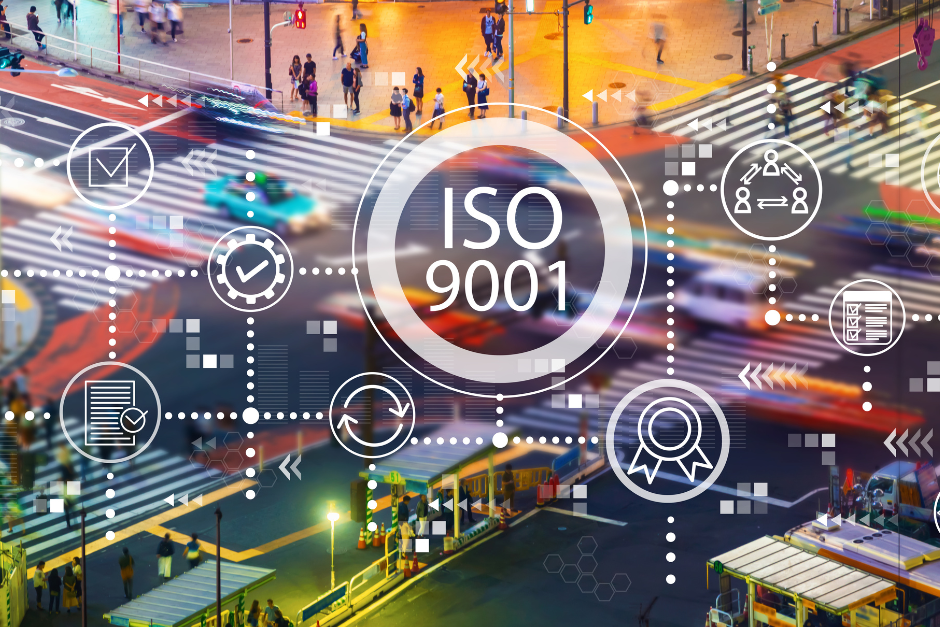Leveraging ISO 9001 Certification to Implement ISO 22301: Strengthening Business Resilience
Leveraging ISO 9001 Certification to Implement ISO 22301: Strengthening Business Resilience
2 min read
Caroline Geoghegan : Apr 24, 2025 2:44:11 PM


In today’s competitive and increasingly regulated business environment, organisations are constantly seeking ways to build credibility, enhance performance, and meet stakeholder expectations.
ISO certification has emerged as a global benchmark for doing just that but what exactly does it mean, and how does it benefit your business?
ISO certification is the process through which an organisation’s management systems are assessed and verified against internationally recognised standards set by the International Organization for Standardization (ISO). Contrary to popular belief, ISO itself does not issue certifications. Instead, these are granted by external certification bodies, independent organisations that audit a company’s compliance with a specific ISO standard.
ISO develops the standards. Certification bodies verify conformity to those standards.
There are over 24000 standards published by ISO, but some of the most commonly certified ones include:
- ISO 9001 (Quality Management Systems)
Focuses on quality assurance and continuous improvement.
- ISO 14001 (Environmental Management Systems)
Helps organisations reduce their environmental impact.
- ISO 45001 (Occupational Health and Safety)
Aims to improve employee safety and wellbeing.
- ISO 27001 (Information Security Management Systems)
Designed to secure sensitive company and customer data.
- ISO 50001 (Energy Management Systems)
Supports efficient energy use and sustainability goals.

Credibility and Trust
Certification signals to clients, partners, and regulators that your organisation meets international best practices.
Improved Efficiency
The certification process often reveals opportunities for streamlining and enhancing operations.
Market Access
For many tenders and supply chains, ISO certification is a prerequisite.
Risk Management
Helps identify, assess, and mitigate operational risks.
Customer Satisfaction
Especially with ISO 9001, organisations improve service delivery and customer loyalty.
While the specific steps can vary depending on the standard and the certification body, the general process includes:
1. Gap Analysis
Assess current processes against ISO requirements.
2. Implementation
Close any gaps through process adjustments, training, and documentation.
3. Internal Audit
Conducted to ensure readiness for the official audit.
4. Certification Audit
A two stage external audit by an accredited body.
5. Certification Issued
Valid for three years with annual surveillance audits.
6. Recertification
After three years, a full reassessment is required.

It’s crucial to choose a certification body that is accredited, meaning they are approved by a national accreditation authority. Accredited certification carries greater weight in international trade and compliance contexts.
Final Thoughts
ISO certification is more than just a badge of honour. It’s a structured path to better governance, sustainability, and customer satisfaction. Whether you're aiming for ISO 9001 to boost product quality, ISO 14001 to demonstrate environmental responsibility, or ISO 27001 to strengthen cybersecurity, certification can be a powerful strategic asset.
Want to learn how ISO certification can fit into your organisation’s growth journey? Reach out to our expert team. We help simplify the process and set you up for long term success.

Leveraging ISO 9001 Certification to Implement ISO 22301: Strengthening Business Resilience

1 min read
The CEO's Shortcut to Sanity: How ISO 9001 Helps You Scale Without Losing Control For many CEOs, scaling a business feels a bit like trying to fix...

QEHS Certification: Saving Your Workplace from Disaster (and Embarrassment) Ah, QEHS certification. The holy trinity of Quality, Environmental,...